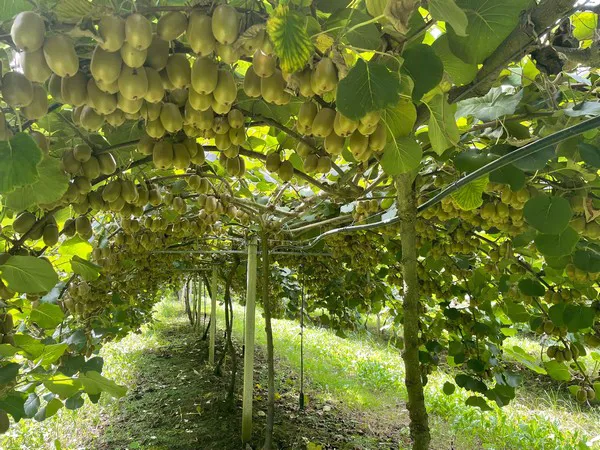The Primland project continues to grow successfully in Asturias, where a significant increase in cultivation hectares is expected. “Currently, our company in the principality, Kiwis La Rodriga, has 15 hectares in production. Another 8 hectares have already been planted (which will soon be expanded to 14), and next year 20 new hectares will be incorporated into the project, in addition to some 1.5 hectares of small associates.”
“In total, that's some 50 hectares in which mainly yellow Oscar kiwis are produced, the variety that the project focuses on,” stated the manager of Kiwis La Rodriga and director of development of the Primland project in the Principality, Rafael Olivo. Contrary to green kiwi, whose global supply is relatively wide, the amount of yellow kiwis available on the market is still low while the demand is high, Rafael stated.

The main volumes of yellow kiwi currently come from New Zealand. In fact, it's one of Zespri's biggest bets, as they produce even more yellow kiwis in the country than green varieties, stated Mr. Olivo, who is also the president of the Association of Kiwi producers of Asturias. However, there still isn't enough yellow kiwi production in the northern hemisphere to fill the market gap that exists when Zespri's southern hemisphere production comes to an end. “The project is committed to the Oscar Gold kiwi, with which we want to fill that demand gap and get a supply in the northern hemisphere throughout the year.”
“La Rodriga grows kiwi berries and green and yellow kiwi varieties that Primland markets throughout Europe: Oscar Green, Oscar Gold, and Nergi, and 10 of our 15 hectares are dedicated to Oscar Gold.”
“We are seeing a growing interest in this project”
Kiwi arrived in Asturias in the 1970s at the hands of Manuel Coque Fuentes, an enthusiastic man who saw how this fruit from New Zealand was causing a sensation in the world, stated Rafael Olivo.
“He promoted the first plantations in Asturias and imported the first plants to the Principality. My father and I started growing kiwis in the 80s and we knew this product was going to have a great future,” Rafael, who has specialized in the cultivation of this fruit for 40 years, stated. “The medical field helped to promote its consumption and kiwi became popular very quickly. In Asturias, its cultivation is growing at the hands of small farmers.”
“However, there is a land problem. It is very difficult to find land available to cultivate because, due to the orography of the land itself, the plots are much more divided. This isn't a region that allows extensive crops, and only 1% of the territory is meadows that are ideal for kiwi plantations. In fact, the kiwi plantations in Asturias are concentrated in the meadows of Narcea and Nalón, mainly. That's one of the reasons why we are going slowly and selecting the producers that best fit our project,” he said. However, it's worth noting that the project has already achieved an important number of hectares. According to data from the Ministry of Agriculture, Fisheries, and Food, Asturias has some 260 hectares devoted to kiwi production, which means that 15 to 20% of the cultivated area of the Principality would already belong to the Primland project in Spain.
“Primland is setting a line and is an example of quality and good work. There is a lot of interest in this project, not only from producers but also from people outside the world of agriculture who want to diversify their business and invest in this fruit, which has a bright future.”
For more information:
Kiwis La Rodriga
Salas, Asturias (España)
Tel.: +34 659 966 667
